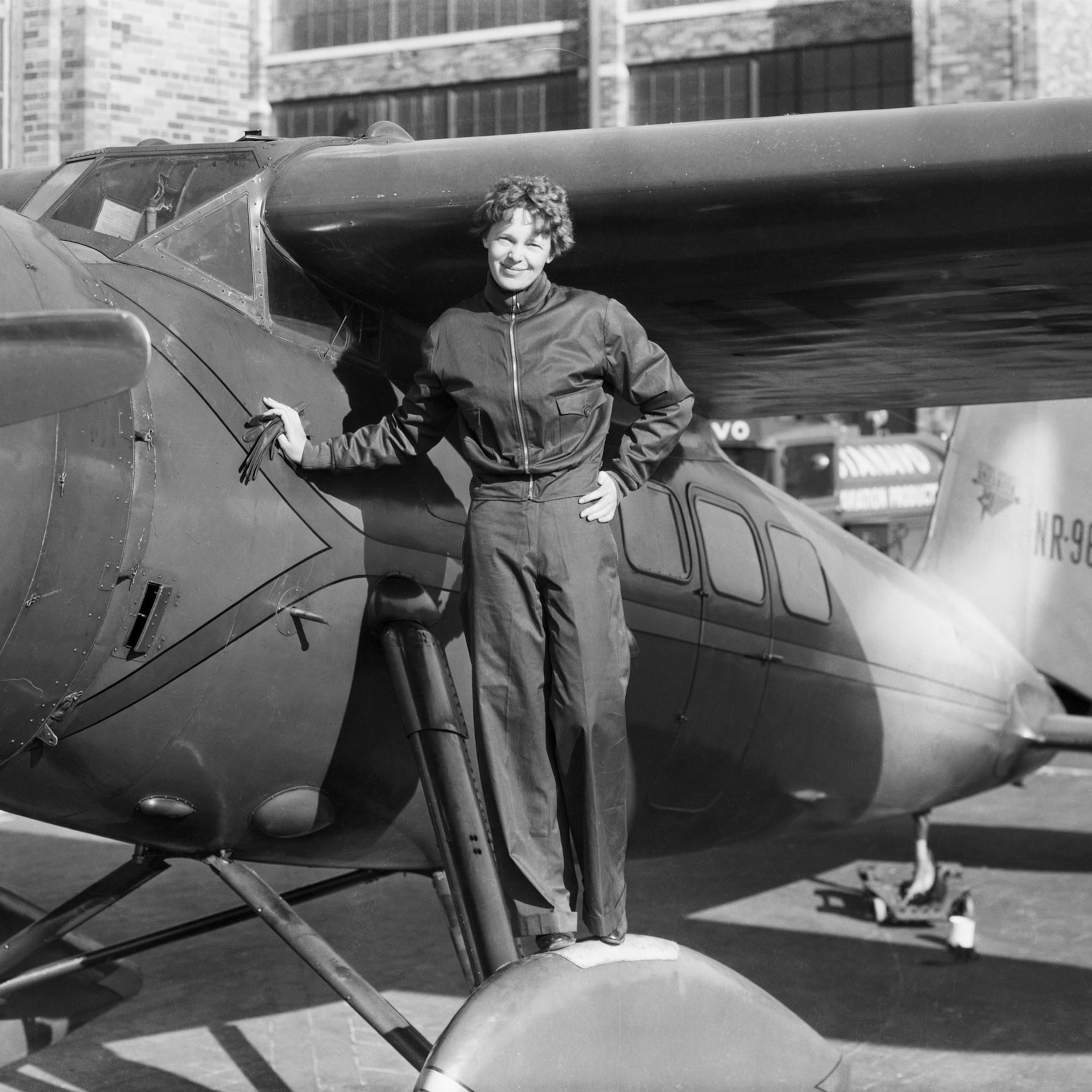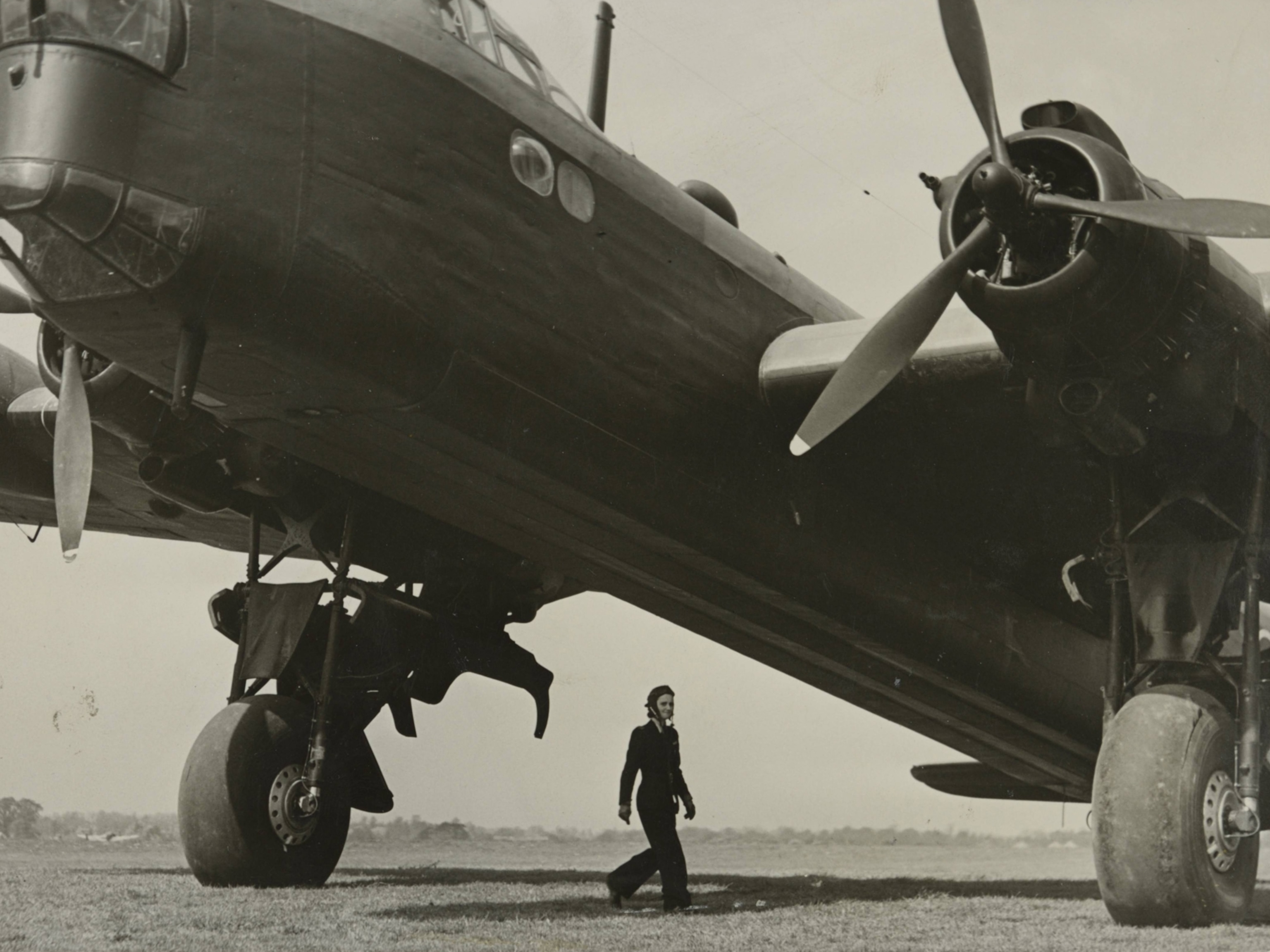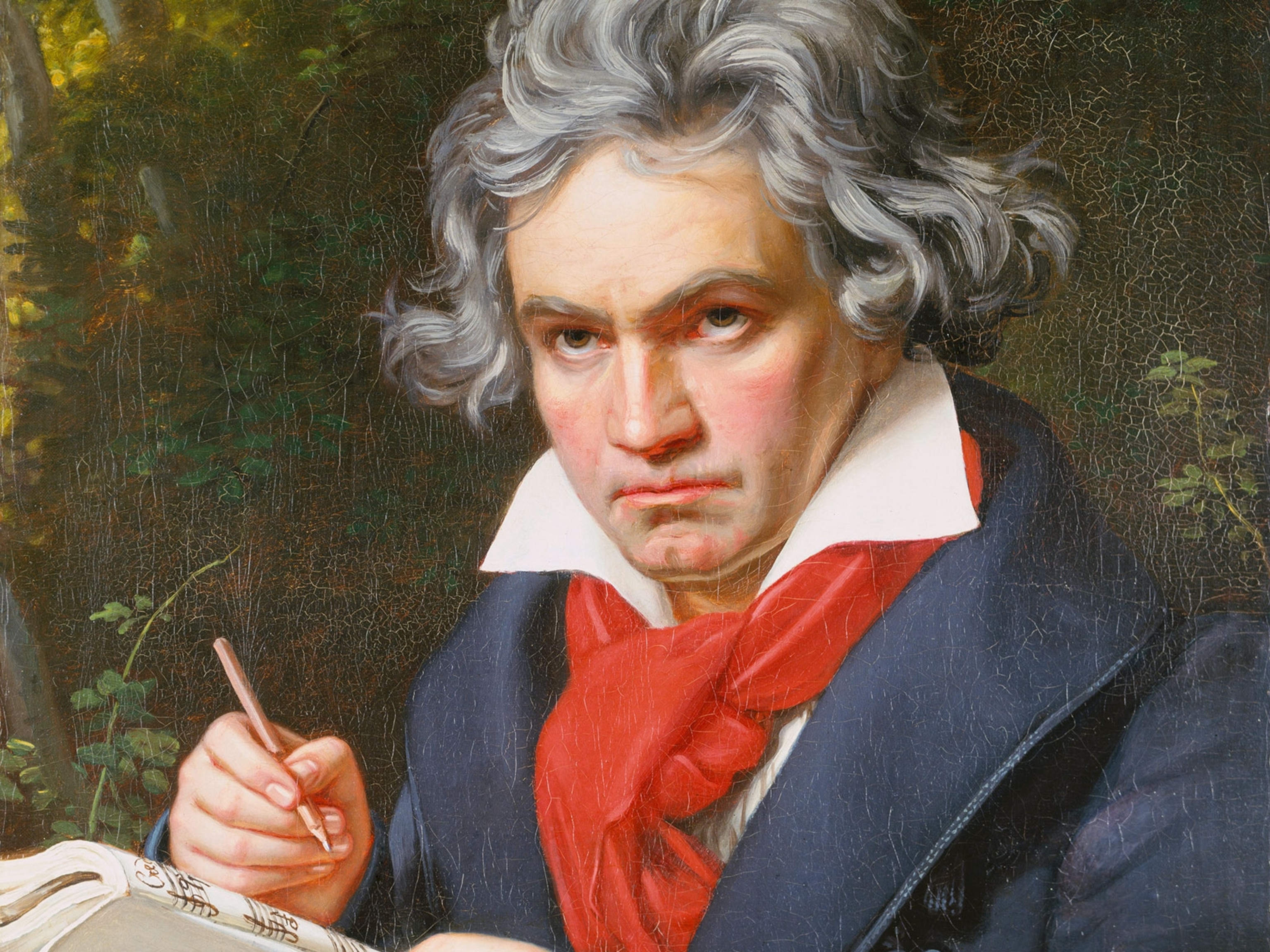How Amelia Earhart navigated the skies and society
The famous aviator deftly traversed the world and society by leveraging her image to pursue her passion.

On June 17, 1928, when famed aviatrix Amelia Earhart made her first transatlantic flight, she was a passenger, not a pilot. Amelia already knew how to fly. She’d had her pilot’s license for five years, but her expertise mattered not; a transatlantic flight was presumed to be too stressful and terrifying for a member of the fairer sex. She went along with it, because she was passionate about flying—and being the first woman, even if she wasn’t in control, was nevertheless awesome. She was stowed in the back of the Friendship, which wasn’t much larger than a Chevy Suburban, behind pilot Wilmer “Bill” Stultz and co-pilot Louis “Slim” Gordon. Amelia, who did nothing but endure the discomfort of the 20-hour, 40-minute flight from Trepassey Harbour, Newfoundland, to Burry Port, Wales, nevertheless became an instant celebrity: the serious, pretty, female face of this newfangled thing called air travel.
When she returned to New York, Amelia was thrown a ticker tape parade. Afterward, a limo had been hired to take her to another appearance. It was a scorching day, the traffic thick. Automotive air-conditioning had yet to be invented. Amelia took one look at the car and imagined being stuck in the backseat in a pool of her own sweat. But then she spied an empty sidecar attached to the motorcycle ridden by one of her police escorts. Without a thought, and without asking any of her minders’ or managers’ permission, she hopped in. The cop flipped on his lights and siren, and away they roared.
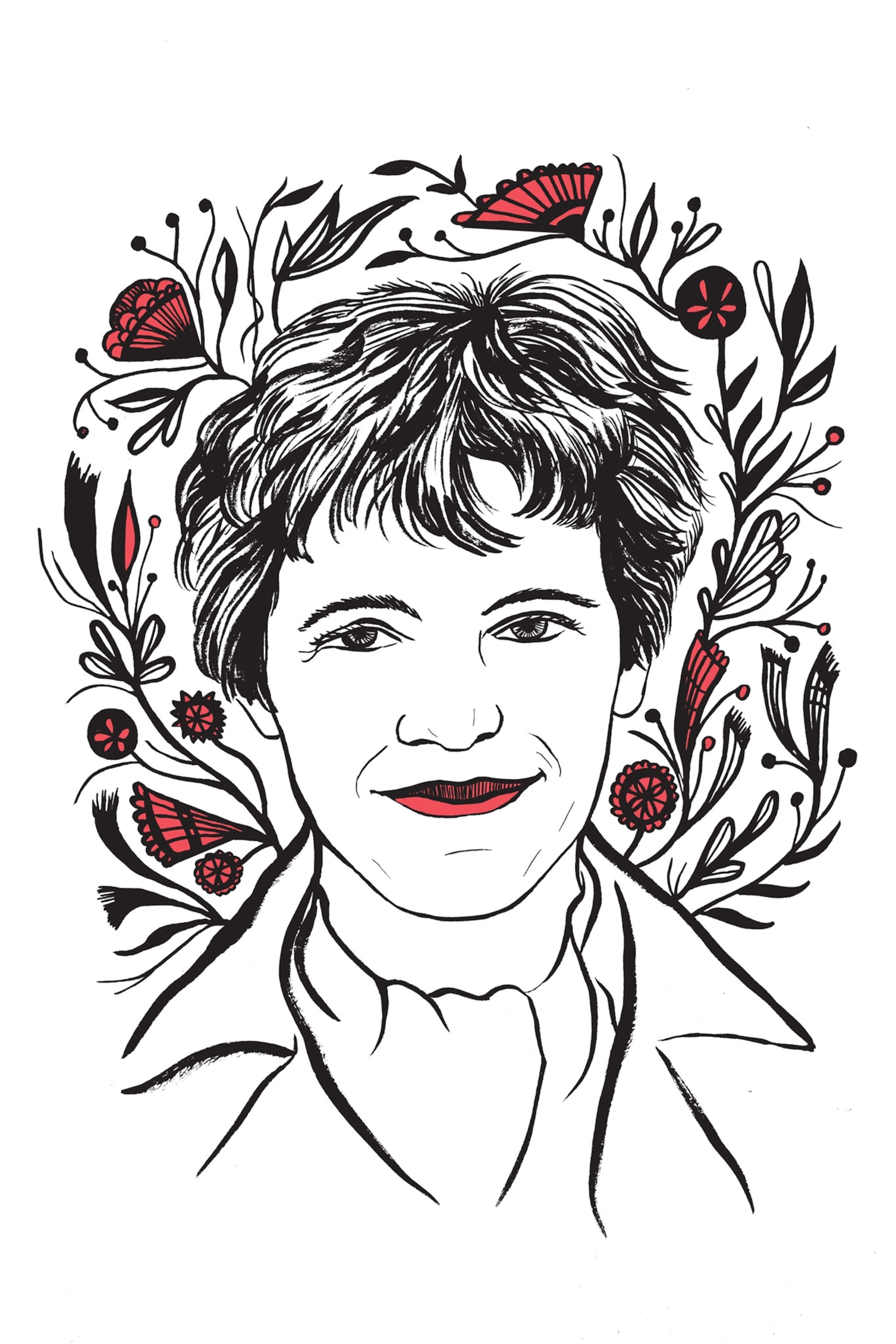
This is classic Amelia: She went along with the program, allowing herself to be celebrated for something she didn’t believe she deserved—I should have been flying the Friendship, not sitting in it like a sack of potatoes! But when the moment arose to escape, she took it without looking back.
The traditional difficult woman is generally outspoken, opinionated, and headstrong. She likes to shoot her mouth off, and has little interest in avoiding conflict; indeed, she finds it stimulating. Apple carts? She lives to upset them. For those of us who wish to be difficult but are introverted and see no reason we shouldn’t keep our opinions to ourselves, Amelia Earhart is our girl. Gracious and somewhat shy on the outside, she was willful and independent on the inside: polite, yet freewheeling, a person who answered to no one. She took the position that adventure is a worthwhile pursuit in and of itself—a radical stance for a woman.
Born on July 24, 1897, in Atchison, Kansas, Amelia was always an adventuresome girl, bombing down hills on her sled in the winter and hunting rats with a rifle she’d pilfered from some male relative in the summer. She maintained a scrapbook of magazine stories and newspaper clippings about women with exciting (male-dominated) careers: film directors, engineers, attorneys. In 1920, at an airshow in Southern California, pilot Frank Hawks was offering 10-minute flights for 10 bucks. Amelia, always restless, always eager to go, took him up on it and was hooked. In the summer of 1921, she bought a used Kinner Airster biplane. In 1923, she became the 16th woman in the world to receive her pilot’s license.

After her celebrated transatlantic flight aboard the Friendship in 1928, Amelia vowed to use the money she made with celebrity appearances, lectures, and best-selling memoirs to finance her own solo trip across the pond. On May 22, 1932, she took off from Harbour Grace, Newfoundland, landing 15 hours later in Londonderry, Northern Ireland. More records followed. She was the first woman to fly solo across the United States, east to west, and the first woman to fly solo from California to Hawaii. In the early 1930s, Amelia set seven solo women’s records, for both time and distance, before setting off, in 1937, to become the first person, male or female, to circumnavigate the globe at the Equator. (Others before her had completed a northern route.)
Part of Amelia's independent nature was inborn. When she was a toddler, she once told her mother, “If you are not here to talk to, I just whisper into my own ears.” When she was seven, the family visited the 1904 St. Louis World’s Fair. Amelia asked if she could ride the roller coaster, and her mother declined. So the child went home and built her own: a death trap made of a pair of two-by-fours, nailed to the edge of the toolshed roof with a wooden crate and roller skate wheels attached. She was the first to test it, and the wipeout at the bottom—busted lip, torn dress—deterred her not at all. “Oh, Pidge,” she said to her sister, “it was just like flying.”
Amelia’s home life was complicated. Her father, Edwin, was an alcoholic. An attorney of some promise, he had no trouble landing jobs but could never seem to keep them. Her mother, Amy (also an Amelia), came from a prominent Atchison family; Amy’s father was a former federal judge and a bank president. She lived in a constant state of disappointment and low-grade fury that married life had left her struggling for money and prestige. The family moved around as their fortunes rose and fell and fell: Des Moines, St. Paul, Chicago. Amelia and her sister were parked at the home of their grandparents for long stretches of time while her parents tried to work things out.
From her very proper grandmother—yet another Amelia, who disapproved of her granddaughter’s tomboy high jinks—Amelia learned a very valuable skill (and one my own mother subscribed to): Tell people what they want to hear, then do whatever the hell you want. From her frustrated mother, Amelia learned the price a wife pays for relying on her husband for her happiness and financial well-being. From her charming father, Edwin, she learned to do whatever made her happy. (Yes, he was that parent.)
In 1920, when Amelia was 23, she and her father took in an air show in Long Beach, California. At that time, aviation was all the rage. Fighter pilots who’d perfected their skills and daring during the First World War barnstormed around the country, showing off their barrel rolls and loop-de-loops. Air shows garnered as much buzz then as the Super Bowl does now. Still, the whole business was insanely dangerous. Engines dropped out of planes at a moment’s notice, propellers ceased turning for reasons no one could explain. Because formal runways were things of the future, landing in a field that looked flat from the air but was in fact studded with gopher holes could spell death. In 1920, 40 pilots had been hired by the government to deliver “aerial” mail, and by 1921 all but nine of them had died. Amelia was undeterred; the risk inherent in flying was part of the magic. Her father paid for her 10-minute introductory flight, and five minutes into the spin around the Southern Californian sky, she knew she had found her passion.
Before that, Amelia hadn’t found anything that compelled her. She was tall and a little nerdy, had excelled at math and science, and had toyed with a career in medicine. But she was pathologically restless. She enrolled in and dropped out of college several times. She completed a course for ambulance drivers. She flitted. She was the original One Thing Leads to Another Girl. Then she discovered flying, a profession that required and burnished her essential character traits: determination, bravery, calm in the face of danger. How lucky it was for her to find an avocation that didn’t force her to tamp down who she knew herself to be.
Her mother—grateful, I suppose, that her daughter had found an outlet for her restless tomboy nature—helped pay for her first flying lessons. Her first flight instructor was also a woman, Anita “Neta” Snook. She was not pretty—then as now, a feminine sin that’s very hard to overlook. Neta was gruff, smelled of engine oil, and was a little weird, living and breathing for this kooky new mania called flying. Amelia showed up for her first lesson in her horseback-riding outfit. The jodhpurs, leather jacket, and boots would become the foundation of her signature style.
Women, like men, should try to do the impossible.Amelia Earhart
By the time Amelia was 24, she had a plane of her own and a series of odd jobs to support her habit. She worked at the phone company, then drove a gravel truck. She took up photography as a sideline, and developed an interest in photographing garbage cans. She wrote, “I can’t name all the moods of which a garbage can is capable.”
Meanwhile, she flew whenever she could. At an air derby in October 1922, she set her first record: the woman’s altitude record, 14,000 feet. She was stubborn, virtually penniless, without a husband or proper career, and completely smitten with flying. It was all she thought about. She taught herself airplane mechanics, read everything she could about airplanes and flight, and hung out at the airfield.
Still, passion doesn’t put pork chops on the table, and in 1925, as Amelia was rounding the bend to 30, she discovered social work. So-called settlement houses, where new immigrants were assisted in transitioning from poor, scary foreigners into respectable middle-class Americans, were considered cutting edge. The most famous settlement house was Jane Addams’s Hull House in Chicago. (Addams would go on to win the Nobel Prize and write the middle school reading list staple, Twenty Years at Hull-House.) Amelia was hired by Denison House, in Boston. She loved her work, but it didn’t pay much; she ran out of money and was forced to sell her plane.
Then, something life changing fell into her lap.
After Charles Lindbergh made the first solo nonstop flight across the Atlantic in 1927, it was only a matter of time before a wealthy woman of means wanted in on the glory. (Back then, you had to have means if you were going to do something as serious and treacherous as attempt to fly across an ocean; you needed the best plane, mechanics, pilots, navigators, and underwriters.)
Amy Phipps Guest, a freewheeling middle-aged heiress and daughter of Henry Phipps, Jr., Andrew Carnegie’s business partner, was worth literally billions. She fancied herself an adventuress and saw no reason she shouldn’t be the first woman to fly across the Atlantic. She leased an at the time elite plane from Donald Woodward, heir to the Jell-O fortune, hired a couple of pilots, and then succumbed to family pressure that the whole enterprise was simply too dangerous. Guest was 55, and aviation was the province of the young and strapping (difficult to imagine when you think of the near comatose state required to enjoy flying today). She was also the mother of three grown children, including a son fresh out of Columbia Law School. Poised to take the bar exam, he told his mother he would certainly fail if he was forced to spend time worrying about her crashing into the North Atlantic.
Here’s the thing: No one flew anywhere of note in those days without making a big to-do about it. Certainly not across an ocean. We great anonymous flying hordes cruising along on the giant, invisible conveyor belt across the sky, gorging on tiny bags of snack mix, were far, far into the future.
Through her connections, Guest reached out to renowned publisher George Putnam, and brought him on board as one of the project coordinators. Also a genius promoter and publicist, George Palmer Putnam was tall and dark haired, old-style handsome in the Don Draper mode. He was the grandson of G. P. Putnam, founder of venerable G. P. Putnam’s Sons, and a self-professed adventure addict. He’d already carved out a niche for himself commissioning expeditions for world-famous adventurers, who would then bang out their tales of mountain climbing, deep-sea diving, and yes, flying, in follow-up memoirs. Putnam had published “We”: The Daring Flyer’s Remarkable Life Story and his Account of the Transatlantic Flight That Shook the World by Charles Lindbergh (and in one stroke cornered the market on the aviation adventure genre).
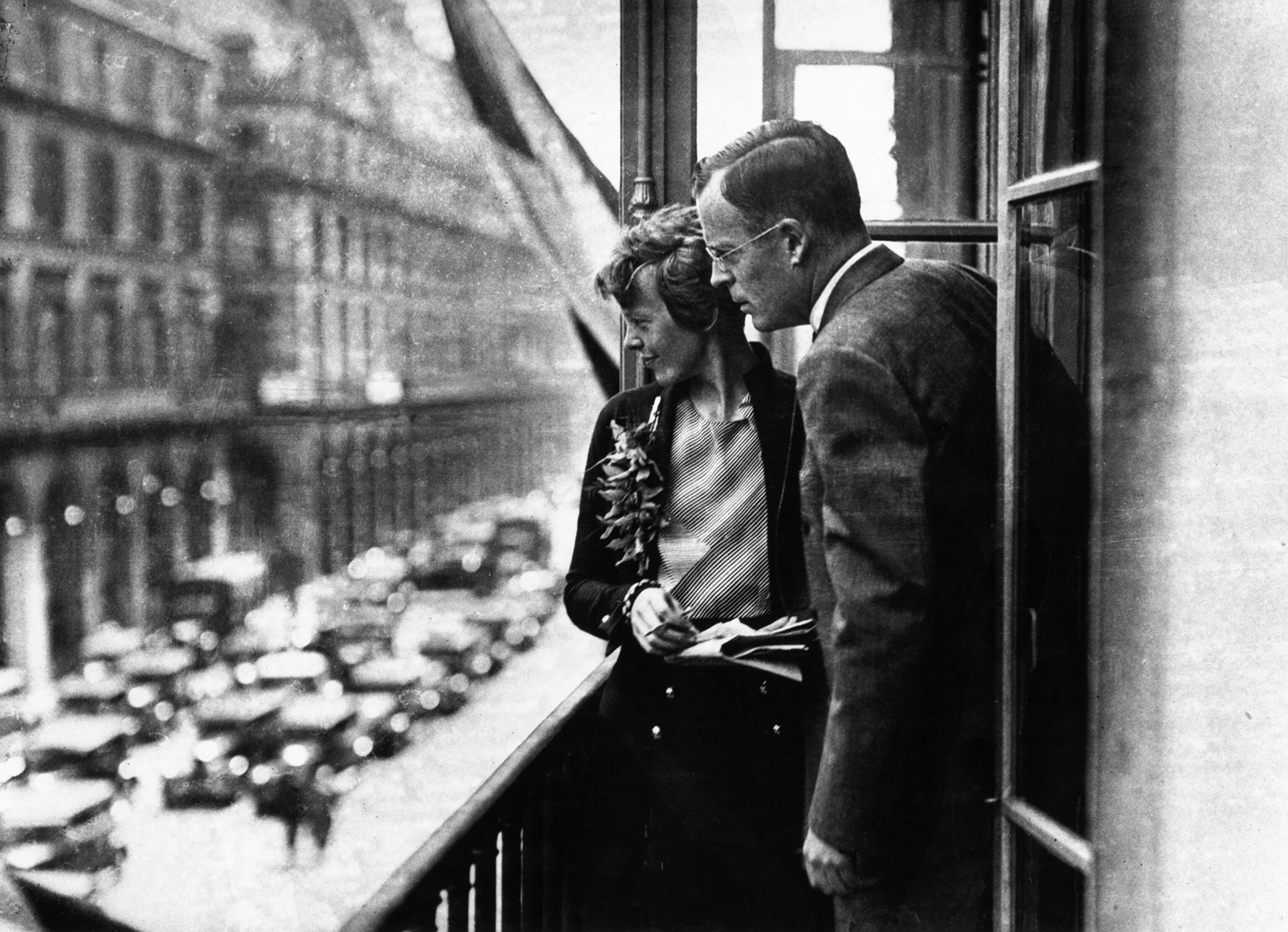
Read: The top three theories behind Ameilia's disappearance.
Guest and Putnam assembled a list of surrogate women for the flight. Guest required “the right sort of girl.” Here is where the Neta Snooks of the world—the ornery, greasy, whiskey-swilling, fingernail-biting female pilots who were brave and willing—simply wouldn’t do. Amelia’s reputation as an up-and-coming star of aviation, with more than 500 hours in the air under her belt and no serious accidents, preceded her. Also, and equally important, her daredevil tomboy soul was hidden beneath a soft-spoken, ladylike exterior. She sported a tousled head of blond curls (although her hair was actually board straight; her look of weather-beaten aviatrix chic required that she curl her hair daily), along with a sprinkling of freckles and a friendly gap-toothed smile. More important, perhaps critically, her body was the body of the times; she was built like a flapper: tall, flat-chested, reed thin. She wore pants—not to be contrary, but to hide her fat ankles—her only serious figure flaw.
Then came the triumphant flight of the Friendship. When the plane landed in Wales on June 18, 1928, Amelia was instantly famous. In New York, the Times banner headline read: “City Greets Miss Earhart; Girl Flier, Shy and Smiling, Shares Praise With Mates.”
That summer of 1928, after the flight that put her on the map, Amelia moved into George and Dorothy Putnam’s home in Rye, New York. The professed reason was so that she and George could work together on her book, 20 Hrs., 40 Min.: Our Flight in the Friendship, but there was also romance in the air. George was smitten with Amelia, and presumably she felt something similar, even though she was a woman who kept her cards close to her chest. Amelia wrote all day, every day, while George focused on promoting her and the forthcoming book. Meanwhile, Dorothy secretly pined for her much younger lover, George Weymouth, a sophomore at Yale. It was commonly believed that Amelia stole George out from under Dorothy’s nose. But even Sally Putnam Chapman, the granddaughter of Dorothy and George, and author of Whistled Like a Bird: The Untold Story of Dorothy Putnam, George Putnam, and Amelia Earhart, says “This was simply not the truth. In fact, quite the opposite; Amelia gave [Dorothy] the excuse she needed [to divorce George].”
In December 1929, Dorothy moved to Reno and filed for divorce, and George persuaded Amelia to marry him. It took some doing. Since girlhood, she hadn’t thought much of the institution. She suspected that unless she took care, she would fall into the same bad situation as her mother. The couple took out a marriage license in November 1930, and on February 7, 1931, Amelia submitted to a no-muss, no-fuss ceremony, wearing one of her usual brown suits with no hat, her dark blond hair carefully tousled in its usual way.
I once knew a woman, a professional BASE jumper, who would rather literally jump off a bridge than hazard the big risks of marriage and motherhood. She was cut from the same cloth as Amelia, who found marriage to be much scarier than flying. On the morning of their marriage, full of fear and dread, Amelia presented George with a letter that read in part:
You must know again my reluctance to marry, my feeling that I shatter thereby chances in work which means most to me . . . On our life together . . . I shall not hold you to any midaevil code of faithfulness to me nor shall I consider myself bound to you similarly . . .
Please let us not interfere with the others’ work or play, nor let the world see our private joys or disagreements. In this connection I may have to keep some place where I can go to be myself, now and then, for I cannot guarantee to endure at all times the confinement of even an attractive cage.
It was addressed to GPP and signed A.E. In it, she also promised to do her best to make the marriage work in every way. This letter is so perversely pragmatic, it’s a wonder the union survived. But George Putnam was just the man to receive such a letter (it’s always important to know your audience). He read it repeatedly, then tucked it away. Only after Amelia’s death did he reveal its existence, calling it evidence of his late wife’s “gallant inward spirit.”
It was the perfect marriage of promoter and promotee.
George worked long hours “growing the Amelia Earhart brand,” as we might describe it today. Cast as “Lady Lindy” by a cagey photographer who snapped her in her aviatrix duds and made her look like Charles Lindbergh’s sister (which she didn’t), Amelia had proved able to compete in the he-man’s world of aviation without appearing in any way threatening. She looked swashbuckling and chic in her breeches and leather jacket, and had a face made for a leather aviator cap (you can’t say that about most people). But whenever the newspaper ran a picture of her, George always made sure it ran alongside another photo of her in elegant flapper attire, complete with fetching cloche hat (again with the hat), an elegant long-waisted dress, and a strand of pearls.
Amelia was a traditionally feminine woman who could nevertheless get in an airplane and fly away. Men remained unthreatened, and women—most of whom are reluctant to completely smash the patriarchy and give up their affection for pretty underwear—were encouraged and inspired. How could they not be?
The same preternatural patience and stamina that allowed Amelia to sit for many long hours in the cockpit of a plane made her a self-promotion warrior. In the early 1930s, she devoted herself to advocating for women in aviation (once, she gave 13 speeches in 12 days), served on committees, gave more speeches, served on more committees, wrote letters on behalf of this, that, and the other aeronautical whatnot. She founded the Ninety-Nines, an organization for female pilots, and her own clothing line. She was made an honorary major of the U.S. Air Service and given a pair of silver wings, which she often wore with her pearls. She struck up a friendship with Eleanor Roosevelt. The first lady had an adventurous streak herself, and was keen to take flying lessons. Amelia hooked her up, but the president vetoed it as too dangerous, even as he was publicly saluting Amelia’s efforts to convince the country that air transportation was the wave of the future.
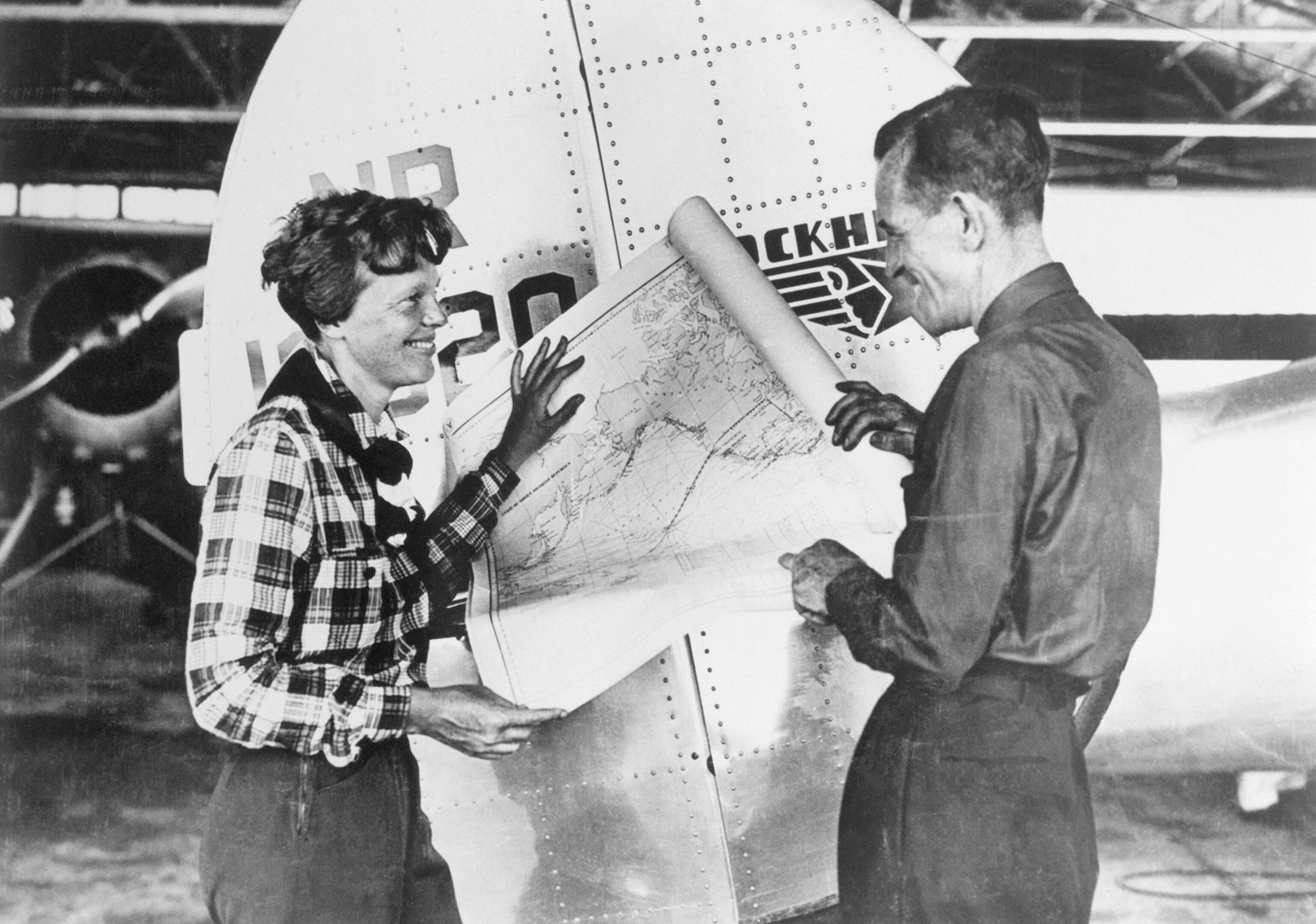
Why researchers believe Nikumaroro Island may have been Amelia's final destination.
On May 20, 1932, five years to the day after Lindbergh made his historic transatlantic flight, Amelia Earhart finally made her own solo flight across the pond. During those five years, many women had taken up flying, and a lot of female pilots were angling for the record. Ruth Nichols, owner of both the altitude and speed record in 1931, announced her own plan to attempt to fly across the Atlantic. She took off in June amid much media hysteria, only to crash during her refueling stop in New Brunswick, wrecking her plane and smashing five vertebrae. Laura Ingalls, an aerialist who held the record for uninterrupted barrel rolls, and 20-year-old Elinor Smith, briefly famous for having flown beneath all of Manhattan’s East River bridges, also had their eyes on the prize.
Amelia, not wishing to alert the press, prepared for her own attempt in secret.
Days before her flight, she puttered around the house with George. She raked leaves (her sole form of exercise). She went over the proofs of her next book, The Fun of It. They invited Ruth Nichols, in a back brace and still recovering from her crash, for a leisurely dinner, and in general behaved as if nothing out of the ordinary was afoot. Bernt Balchen, one of her flight advisers, busied himself every day at the private New Jersey airport Teterboro, prepping her Lockheed Vega; the press reported he was borrowing the plane to fly to the North Pole. Then, on the morning of May 20, 1932, Amelia moseyed over to the airport, hopped in her plane, and took off alone across the ocean, headed for Paris.
The sky was clear. She flew northeast, stopping to refuel at Harbour Grace, Newfoundland, before continuing along the polar route. She flew at 12,000 feet, sipping hot soup from her thermos. Hours passed. Below, icebergs drifted past, pink in the setting sun. Then the altimeter went on the fritz. She wasn’t too worried. There were a few scattered low clouds, and she was confident she could estimate her altitude as long as she could still see the water. A bit later she glanced out the window and spied a tiny blue flame near the exhaust manifold. She was at that point where turning back was as treacherous as continuing on.
She was at that point where turning back was as treacherous as continuing on.KAREN KARBO
The visibility began to deteriorate. Suddenly, she was flying through dark, many-storied thunderheads, the kind every modern-day commercial pilot is routinely ordered to fly around, or risk upsetting the drink service. There was nothing for Amelia to do but fly through them, jouncing around in the wind and rain, continuing along her fixed-compass course. Soon the rain turned to ice, and the controls froze, sending her tiny plane into a spin. As she hurtled toward the green-gray whitecaps, the ice melted, and she was able to regain control. But minutes after she regained her cruising altitude, the rain turned to ice again, the windshield frosted over, the gears froze, and the plane spun. Once again, she plummeted toward the sea, the ice again melted during the descent, and she flew low over the churning sea until she hoped it was safe to ascend once more. As the sun rose, she found herself on the other side of the storm, gliding into the dawn. All the unanticipated descending and ascending had used up fuel; she flipped the switch on an auxiliary gas tank, only to feel fuel trickling down the side of her neck from an invisible leak overhead.
She had been headed for France, but once she saw green hills beneath her she thought better of it, given the frozen altimeter, the fire in the exhaust manifold, and the leaky auxiliary gas tank. At 13:46 GMT, she landed in a pasture on a farm outside Londonderry, Ireland. The flight had lasted 14 hours, 56 minutes. A farmer came running as she crawled out of the cockpit. “Have you flown far?” he asked. She said, “From America.” If she was frazzled and freaked out, you’d never know it. Amelia could be as laconic as a cowboy. Even though she didn’t make it to Paris, as Lindbergh had done, the world saluted her achievement. Amelia received a Gold Medal from the National Geographic Society, and Congress presented her with a Distinguished Flying Cross.
Most women are wary of indulging their difficult side. Oh sure, we may have managed to convince our friends—even our mothers and sisters— that we’re feisty or kickass. We tell stories about hurling F-bombs, how we carried on at Burning Man, or rocked some inappropriate outfit at a friend’s wedding. We smoke, even though we know it’s going to kill us! But when it comes to putting ourselves and our own needs above those of people we love, we are wary. We’ve been bred to worry that only a woman who’s prepared to wind up alone insists on the primacy of her own needs. We’re afraid that if we honor and express our true selves, and if that true self is not as self-sacrificing as society demands of women, we will chase everyone we love away.
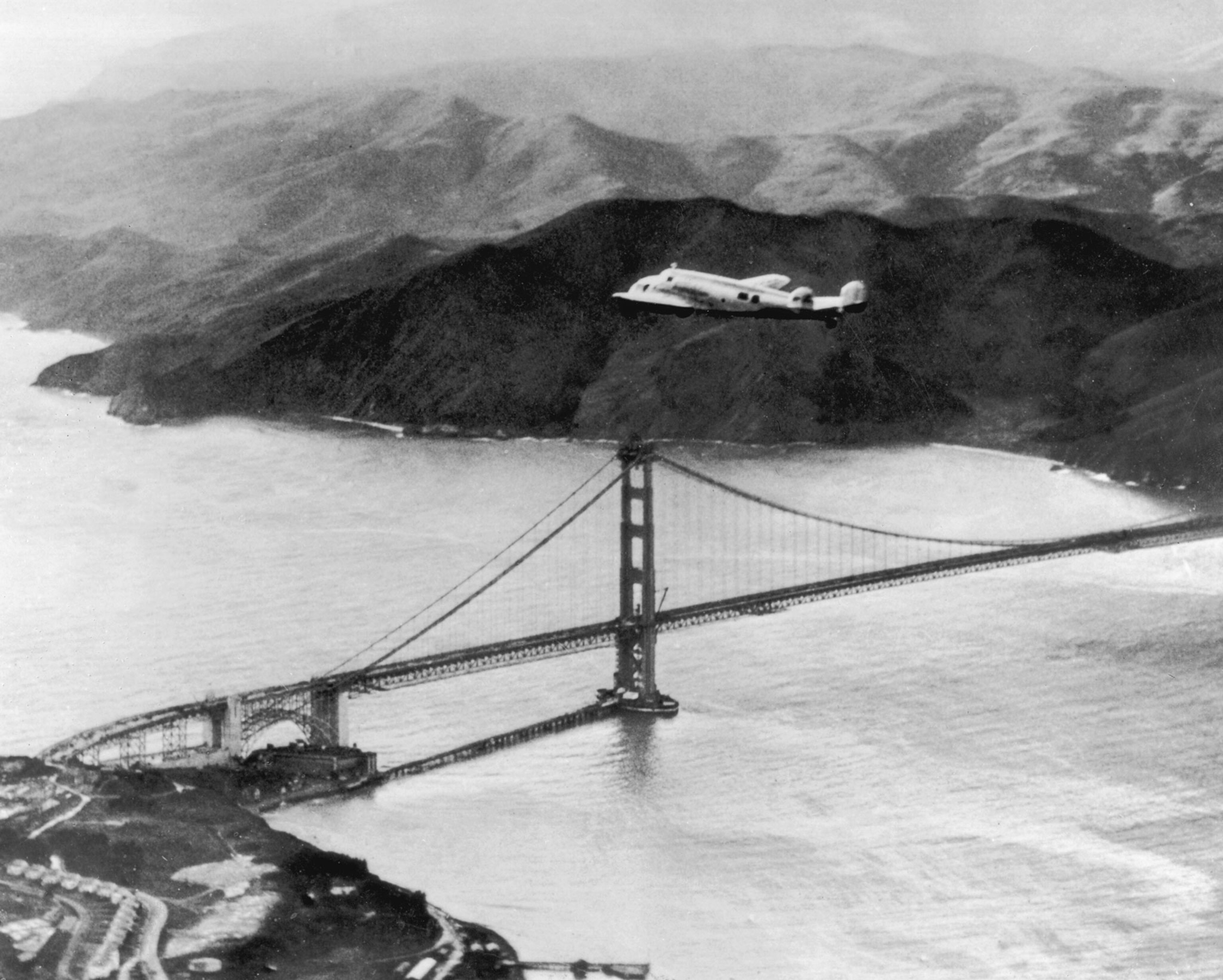
But Amelia was true to herself, and George did not run away. She followed her heart—not his heart—and he only loved her more. He loved her enough to help her prepare for her greatest flight, the one that would take her from him.
Amelia's great dream was to fly around the world. “Women, like men, should try to do the impossible,” she said by way of explanation. The proposed flight wasn’t exactly impossible, but it was complicated and expensive. The risk was off the charts, the kind of chance that only difficult women take. Amelia couldn’t have been more exhilarated. Flying with navigator Fred Noonan, she took off on May 20, 1937, from Oakland, California, heading east. Across the United States, down the east coast of Central and South America, across the Atlantic, Africa, the southern edge of Arabia, India. Amelia and Noonan reached Lae, New Guinea, on June 29. The only leg left was a final 7,000 miles across the Pacific. They took off on July 2 for Howland Island, her Lockheed Electra groaning with enough fuel to get them to the next stop on their round-the-world flight.
Howland Island is a 1.7-square-mile amoeba-shaped dab of featureless earth in the middle of the ocean, 2,556 miles northeast of Lae. To give you a sense of the challenge of trying to find and land on teeny Howland using only compass navigation: Imagine standing atop the Empire State Building and trying to hit a bull’s-eye on a dartboard hanging on the Statue of Liberty, five miles away.
The Coast Guard cutter Itasca was moored off Howland, belching a thick column of black smoke into the air: a signal for Amelia. As she made her approach, the Itasca received a few radio transmissions from her, but the Electra never arrived. It has never been found, and the boundless curiosity about Amelia’s disappearance continues to this day. As of this writing another search party has departed for the South Pacific, equipped with the usual high-tech search and rescue devices, as well as a few rescue dogs trained to sniff out bone fragments.
Read: Amelia Earhart's Bones May Have Been Discovered in 1940
So many theories, one more romantic than the next. That Amelia was a spy, tasked with mapping the Pacific for her good friend President Franklin D. Roosevelt, and was captured and killed by the Japanese. Or that she was rescued from the crash and, in some kind of nonsensical famous person protection program, sent to live out the rest of her life as a banker in New Jersey. The most likely of the unlikely explanations is that she crashed on Nikumaroro Island, a few hundred miles southeast of Howland, where she and Fred lived as sexy tropical island castaways until they perished.
Every time there’s a new Amelia book or movie, people get whipped up all over again about her disappearance. There are think pieces about her character: America’s sweetheart was not as pure of heart as we once imagined, but selfish and self-aggrandizing. Or she took that last, fatal flight for her own pleasure. Or she enjoyed self-promotion a little too much. And what about her very modern marriage? There are stories about the obsessives who’ve devoted their lives to “finding” her, and updates on how the latest in advanced technology can be employed in the ongoing search. (If we can’t find Malaysia Flight 370 with all the goodies in the search and rescue box, I think it’s unlikely anyone will find the 80-year-old Electra.)
Though Amelia has been gone all these years, her difficult woman philosophy lives on. “Adventure is worthwhile in itself,” she said. Men have always done things because it gave them pleasure and a sense of achievement. So why shouldn’t women be granted the same privilege?

